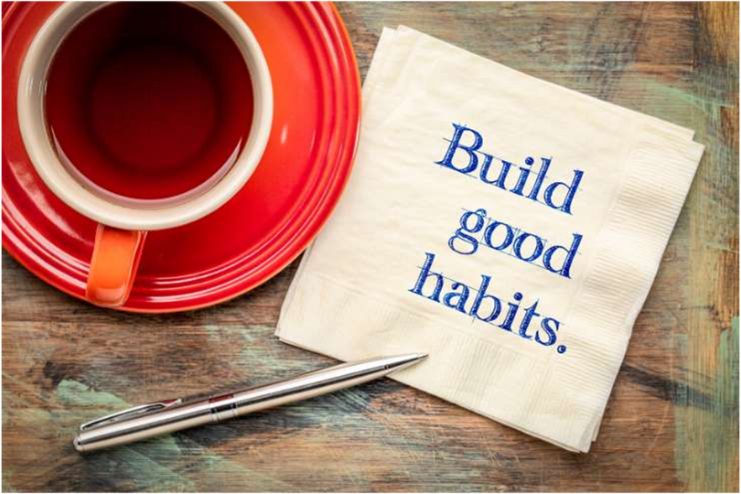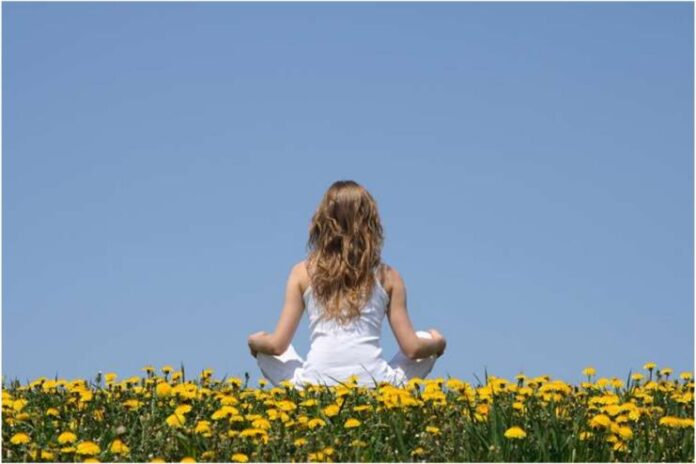AI Contribution
At HealthSpectra, we may use AI to refine grammar and structure, but every piece is shaped, checked, and approved by real people, our expert writers and editors, to ensure clarity, credibility, and care. Learn more..Affiliate Disclaimer
Some links in this article are affiliate links. We may earn a small commission if you make a purchase through these links, at no extra cost to you. We only recommend products we find useful to our readersThe idea of mindfulness has come to light as a source of peace and self-awareness.
Fundamentally, mindfulness is the skill of being present. It is a way of living that encourages people to participate entirely in the present and develop an acute awareness of their thoughts, feelings, and environment. Mindfulness is a transforming technique that helps people ground themselves in the present moment rather than just a passing fad. It entails focusing attention on the present moment.
Mindfulness is essential in contexts outside of regular meditation sessions. Regular mindfulness practice is not a luxury—it is a need. Tapping into our daily tasks and obstacles with a mindful perspective becomes crucial as we navigate them.
Practicing mindfulness allows us to navigate social interactions more effectively and appreciate the simple joys of life through thoughtful actions rather than impulsive ones.
1. Understanding Mindfulness

Fundamentally, mindfulness is a practice built upon several fundamental ideas that provide the basis for its transformative potential. To be attentive means to intentionally focus one’s attention, to be conscious, to inhale, to stay motionless, to watch, to be aware of what is happening right now, and to accept your feelings and ideas without judgment. The three guiding concepts of mindfulness are acceptance, awareness, and non-judgment.
Awareness: Redirecting attention away from past distractions and future worries to focus on the present moment requires developing awareness. It involves paying attention to one’s body, especially the breath. We cultivate moment-by-moment awareness of our breathing, our body’s motions and sensations, and our bodies’ material and transient nature.
Acceptance: One essential element is acceptance, which encourages people to accept their experiences without opposition or condemnation. It is getting all of our thoughts and emotions, good and evil, and fully embracing the moment as it is without judgment. It’s about making room for a deeper comprehension of one’s inner terrain.
Nonjudgment: In addition to acceptance, the principle of nonjudgment calls on practitioners to let go of the need to assign right or wrong to events. When there is no judgment, people can approach circumstances with curiosity and openness. Nonjudgmental behavior was positively correlated with stress levels at the moment. Stress levels were lower among those who could not pass judgment on their ideas and emotions.
Scientific study has shown that regular mindfulness practice has a positive impact on mental health and overall well-being. The word “mindfulness” has been used to describe a character feature, a way of processing information, a psychological state of awareness, and the practices supporting this awareness. Studies have demonstrated that mindfulness lowers anxiety and sadness. It could aid in pain management.
Additionally, the incorporation of mindfulness practice into therapeutic procedures has demonstrated its effectiveness in treating a range of mental health disorders. When one understands mindfulness, one not only accepts its fundamental ideas but also acknowledges the many advantages that science has shown to be beneficial, highlighting the practice’s importance in building mental toughness and advancing overall well-being.
2. Mindfulness Techniques for Daily Life

Amid the chaos of everyday life, practicing mindfulness can be a potent stress reliever and a route to improved well-being. The straightforward yet powerful practice of mindful breathing is the foundation of many mindfulness exercises. Numerous breathing techniques help you feel calmer and more relaxed if you’re experiencing high levels of stress or worry.
It’s simple to get going. All you need is a peaceful area to focus on breathing. You can dedicate a little time during the day to breathing exercises. All you need to do is schedule some time to focus on breathing.
The simplest method of practicing mindful breathing is to pay attention to each inhalation and exhalation of your breath. While standing is an option, it is preferable to sit or even lie down in a comfortable position for this.
You can keep a soft glance while keeping your eyes partially closed and not paying attention to anything specific, or you can keep them open or closed. Observing the sensation of air entering and leaving the body is mindful breathing. It entails paying attention to your breath, its location in your body, and its manner without attempting to alter it.
Deep breathing exercises are part of mindful breathing. Large breaths are used in deep breathing, which regulates the length. It accomplishes a specific goal, such as sleeping or relaxing while in hypnosis or meditation. Core mindfulness is taught through attentive breathing. Practicing mindfulness breathing and other meditation techniques has several established health benefits.
One of the benefits of the age-old practice of meditation is enhanced awareness of the present moment. There are numerous varieties of meditation. Body scan meditation, intended to increase body awareness and encourage relaxation, is another powerful mindfulness method.
Using body scan meditation (BSM) can help people better comprehend their body and mind. It can help people discover the origins of their unwelcome or negative thoughts and emotions. They might also learn better techniques to deal with issues, resulting in a more upbeat attitude and enhancements to general well-being.
A mindfulness meditation technique called the “body scan” involves looking throughout your body for pain, stress, or unusual sensations. You may feel closer to your emotional and physical self due to it. Body scan meditation practice was linked to higher levels of mindfulness and improved psychological well-being in studies that did not use Headspace.
Choose a comfortable position, like sitting or lying down with a straight back. With your eyes closed, mentally “scan” down your body, beginning at the top of your head. Focus your attention on your head and neck and observe any sensations, feelings, or pain you may be experiencing. It would help if you repeated this exercise for your back, shoulders, arms, hands, chest, hips, legs, feet, and so forth, giving each body part 20 to 30 seconds of attention.
3. Integrating Mindfulness into Activities

By incorporating mindfulness into regular activities, one can turn ordinary moments into opportunities for presence, gratitude, and self-awareness with the goal of a mindful existence. In a society where people are used to eating on the go and with hectic schedules, mindful eating is a potent remedy that encourages people to enjoy every bite.
Instead of being a diet, mindful eating is a means to develop a stronger bond with the process of self-nourishment. Mindful eating is an approach to eating that stresses paying attention to our food on purpose, minute by moment, and without passing judgment. It focuses on people’s sensory awareness of the food and their experience. It is not particularly related to fat, protein, carbs, or calories.
Mindful eating invites you to take your time and enjoy your food. You take your time to enjoy each bite of food and fully immerse yourself in its flavors, textures, and aromas rather than hurrying through meals. You have a better connection with food because you are more aware of your body’s demands and cues.
Eating slowly is one of the main components of mindful eating. Eating too fast makes it easier for your brain to recognize when your stomach is full, leading to overeating. Reducing your speed lets your body speak to you and tell you when enough is enough. Thus, try to pace yourself the next time you eat and savor every bite.
Our gait or the ease with which we move when engaging in different physical activities might serve as entry points to mindfulness, whether walking, running, or just doing a basic stretching routine, including mindfulness in your movements increases your awareness and sense of being in the now. In today’s hectic and frequently stressful work environments, finding times of calm and relaxation can be difficult. On the other hand, incorporating mindfulness walking into your regular activities can significantly enhance your general productivity and well-being.
Mindful movement, which entails bringing awareness into physical activities like walking during the workday, is one efficient way to accomplish this. Studies reveal that taking a thoughtful stroll outdoors can positively affect mood, reduce stress, and provide a much-needed opportunity for physical activity.
After taking a mindfulness course, mindful walking is frequently mentioned as the practice students like the most and are most likely to stick with. It serves as the finest reminder that practicing mindfulness doesn’t always need to be done in silence or indoors. Walking mindfully enables us to tune into our bodies and move in a way that can improve our mind-body connection, relieve tension, and release stored energy.
Integrating mental and physical well-being is an excellent technique to practice self-care. Mindful movement has been shown to dramatically lower stress, increase attention and concentration, improve physical well-being, and declutter our minds. Worries about the past or the future fade as we concentrate on the here and now.
4. Mindfulness in Daily Routines

Incorporating mindfulness into your daily routine can create a positive atmosphere for the hours ahead when the sun rises and a new day begins. Mindful activities in regular work and morning routines can help cultivate a more significant presence, sharper focus, and a more balanced way of living. The first few minutes of the day can significantly impact our day.
Establishing a mindful morning practice can create a sense of serenity and purpose. Most of us don’t feel we have five minutes to sit down and unwind, let alone thirty minutes for a meditation session. But setting aside a short period each day to practice mental spaciousness and attain a happy outlook is crucial for our well-being.
Our morning rituals are the key to realizing our full potential. Here are some valuable tips to help create a successful morning habit to obtain inspiration and clarity. As we all know, how we begin our day determines how the rest of it will go, so making the time and effort to establish a meaningful morning routine is worthwhile.
Rise Earlier, Seize the Day: Getting up early enables us to seize valuable moments for ourselves before the rest of the world awakens.
Meditation & Mindfulness: Spending a few minutes practicing mindfulness or meditation in the morning. This exercise promotes mental clarity, lower levels of stress, and inner serenity.
Physical Activity: Getting our bodies moving early in the morning increases our energy levels and prepares us for the day.
You don’t have to limit mindfulness to set meditation sessions; it may be applied to all aspects of your daily life, including your regular duties. Whether doing housework, answering emails, or working on a job project, incorporating mindfulness into daily tasks can improve your well-being.
As recovering from our addiction to technology is a much more significant undertaking, we must establish routines in our everyday lives that help us reconnect with what is truly important. It might be challenging to fit in a 20–30 minute mindfulness meditation in our hectic lives, even though nothing beats a good one. Alternatively, we might develop micro-practices to help us focus during the day. Here are some mindfulness exercises we can do all day long:
Practice gratitude: Being grateful requires us to concentrate on the good things in our lives.
Check in with your body: No matter what you do, your body continues to perform its duties. For example, your heart beats constantly, your breathing occurs independently, and so on. But through bodily experiences, the body communicates with us all the time. Check in with your body for a bit. What do you notice?
Activity the centering exercise: One of the finest exercises is the Centering Exercise. This quick 30-second activity uses centering to help us become more aware of our bodies and the present moment.
Pay attention to your breath: Paying attention to our breath is another way to draw our attention to the present moment.
5. Cultivating Mindfulness as a Habit

Making regular mindfulness practice a habit calls for dedication. Common mindfulness practice trains the mind in the same way that physical training strengthens the body. Incorporating mindfulness into daily life is the key to making a lasting influence. Studies have shown that mindfulness techniques may improve people’s ability to handle stress, deal with life-threatening illnesses, and lessen feelings of sadness and anxiety.
Many individuals who engage in mindfulness practice mention feeling more at ease, having more energy, and having higher self-esteem. Mindfulness improves health and well-being through its effects on emotion regulation, including reduced negative emotion rumination and emotional reactivity. Decide on a specific time each day to practice, be it a few minutes in the morning or right before bed.
Starting a mindfulness journey has its share of difficulties. Having a full schedule, having racing thoughts, or having trouble focusing are common barriers. Start with modest, realistic practice time increments to get past these obstacles. The following are some typical roadblocks people encounter while attempting to develop a mindfulness habit:
Time Restraints: Finding time to sit down and practice mindfulness in our hectic lives can be challenging. Making time for oneself can frequently feel like a luxury that is out of reach for many people due to jobs, family obligations, and never-ending to-do lists.
Difficulty Focusing: When practicing mindfulness, the mind’s innate propensity to wander becomes painfully evident. Keeping your attention on the here and now can be challenging without letting your thoughts wander.
Feeling of Impatience or Frustration: When mindfulness meditation isn’t as easy or tranquil as anticipated, beginners may become frustrated and impatient due to the practice’s seeming simplicity.
Physical Discomfort: Sitting still for a prolonged time while meditating can be somewhat uncomfortable for some who are not accustomed to it.
Conclusion
In today’s busy environment, the value of small mindfulness activities cannot be overstated. Whether incorporated into everyday routines, morning rituals, or periods of focused breathing, these practices act as stepping stones toward a more peaceful and present life. Consistent mindfulness has a cumulative effect beyond isolated incidents and promotes a significant change in our world perspective.
Think about the transforming power of mindfulness in your own life as we analyze the concepts, methods, and applications covered. Accept the ease with which these techniques can be applied and their significant effects on your overall health. Allow mindfulness to transform from an idea into a lived experience that will lead you to a more contented, balanced, and attentive way of being. Practicing mindfulness will lead to self-awareness, resiliency, and the development of a stronger bond with the richness of every moment.
References
- https://mindfulness-alliance.org/2019/03/09/foundations-of-mindfulness
- https://wellsanfrancisco.com/5-foundations-meditation-beginners-guide
- https://oktataskepzes.tka.hu/en/crocoos/non-judgemental-behaviour
- https://www.apa.org/monitor/2012/07-08/ce-corner
- https://newsinhealth.nih.gov/2021/06/mindfulness-your-health
- https://www.helpguide.org/harvard/benefits-of-mindfulness.htm
- https://ggia.berkeley.edu/practice/mindful_breathing
- https://www.healthline.com/health/breathing-exercise
- https://www.headspace.com/meditation/body-scan
- https://www.healthline.com/health/body-scan-meditation
- https://www.medicalnewstoday.com/articles/body-scan-meditation#how-to-do-it
- https://www.durangoherald.com/articles/the-art-of-mindful-eating-savoring-every-bite
- https://www.ncbi.nlm.nih.gov/pmc/articles/PMC5556586
- https://www.mindful.org/6-ways-to-get-the-benefits-of-mindful-walking
- https://positivepsychology.com/mindful-walking/
- https://www.linkedin.com/pulse/building-morning-routine-unlocking-success-ayije?trk=public_post
- https://moniquetallon.com/10-simple-ways-to-practice-mindfulness-in-our-daily-life/
- https://www.ncbi.nlm.nih.gov/pmc/articles/PMC7748211/
- https://newsinhealth.nih.gov/2012/01/mindfulness-matters
- https://medium.com/@endrasim/challenges-in-building-a-mindfulness-habit-and-how-to-overcome-them-6e6390532248
In this Article





















